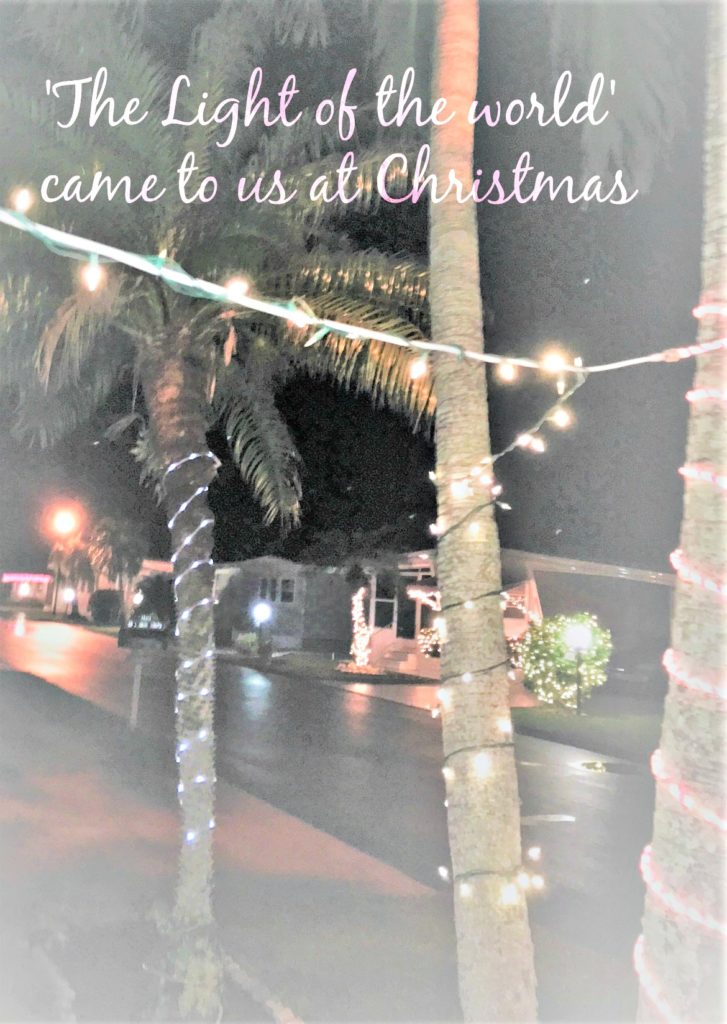 Putting up Christmas lights is a tradition at our house.
Putting up Christmas lights is a tradition at our house.
Whether stringing them along the eaves of the roof or wrapping them around the trunks of palm trees, getting the lights up signifies that we are anticipating Christmas.
I remember taking drives with my parents as a child and peering out the car windows to view the decorations throughout our town. We did the same with our children, seeking out the most elaborate displays. Now, Christmas lights have taken on such significance that there’s even a TV show to see who has the biggest, most creative, display each year.
No other holiday is celebrated with multi-colored lights the way Christmas is. Why?
Because this holiday celebrates the birth of Jesus Christ, who came to bring light to the darkness. He said, “I am the light of the world. Whoever follows me will not walk in darkness, but will have the light of life” (John 8:13, ESV).
From the beginning, light has been the symbol of all that is good, and darkness has been acknowledged as not good: “Darkness was over the face of the deep.… And God said, ‘Let there be light,’ and there was light. And God saw that the light was good” (Genesis 1:2-4, ESV).
The Psalmist declared, “The Lord is my light and my salvation; whom shall I fear?” (Psalm 27:1, ESV). As long as he could walk in the light of the Lord, he had no reason to be afraid.
While the world seems to become ever darker around us, we, too, can rely on ”the Father of lights, with whom there is no variation or shadow due to change” (James 1:17, ESV).
And because we can rely on the Light whose birth we celebrate this season, we decorate our homes with candles, lanterns, and strings of electrical bulbs. We have reason to share that Light with those around us and live as “children of God without blemish in the midst of a crooked and twisted generation, among whom [we] shine as lights in the world” (Phil. 2:15, ESV).
Yes, that’s a tall order. But if we don’t share the true Light with the world around us, who will?



